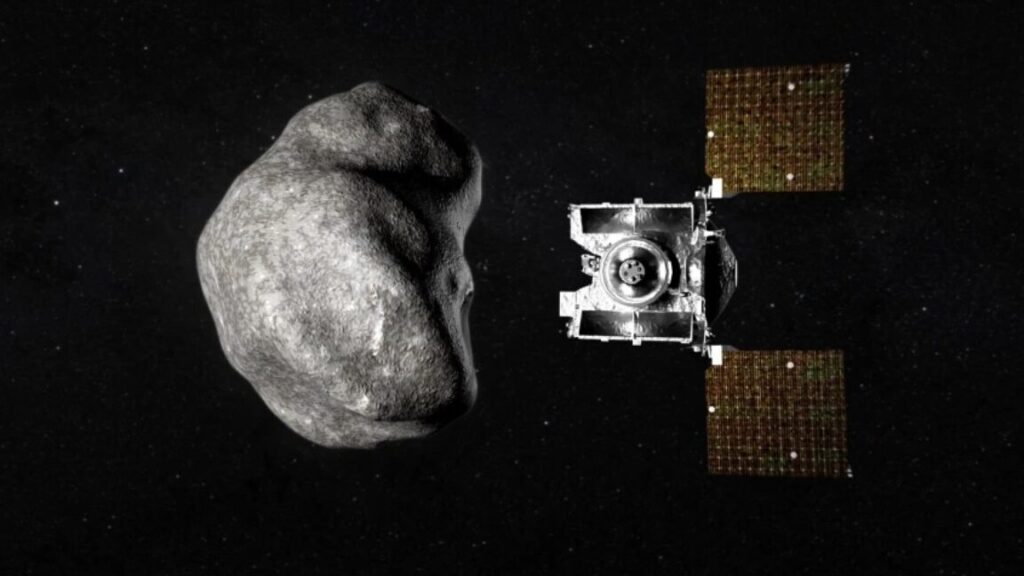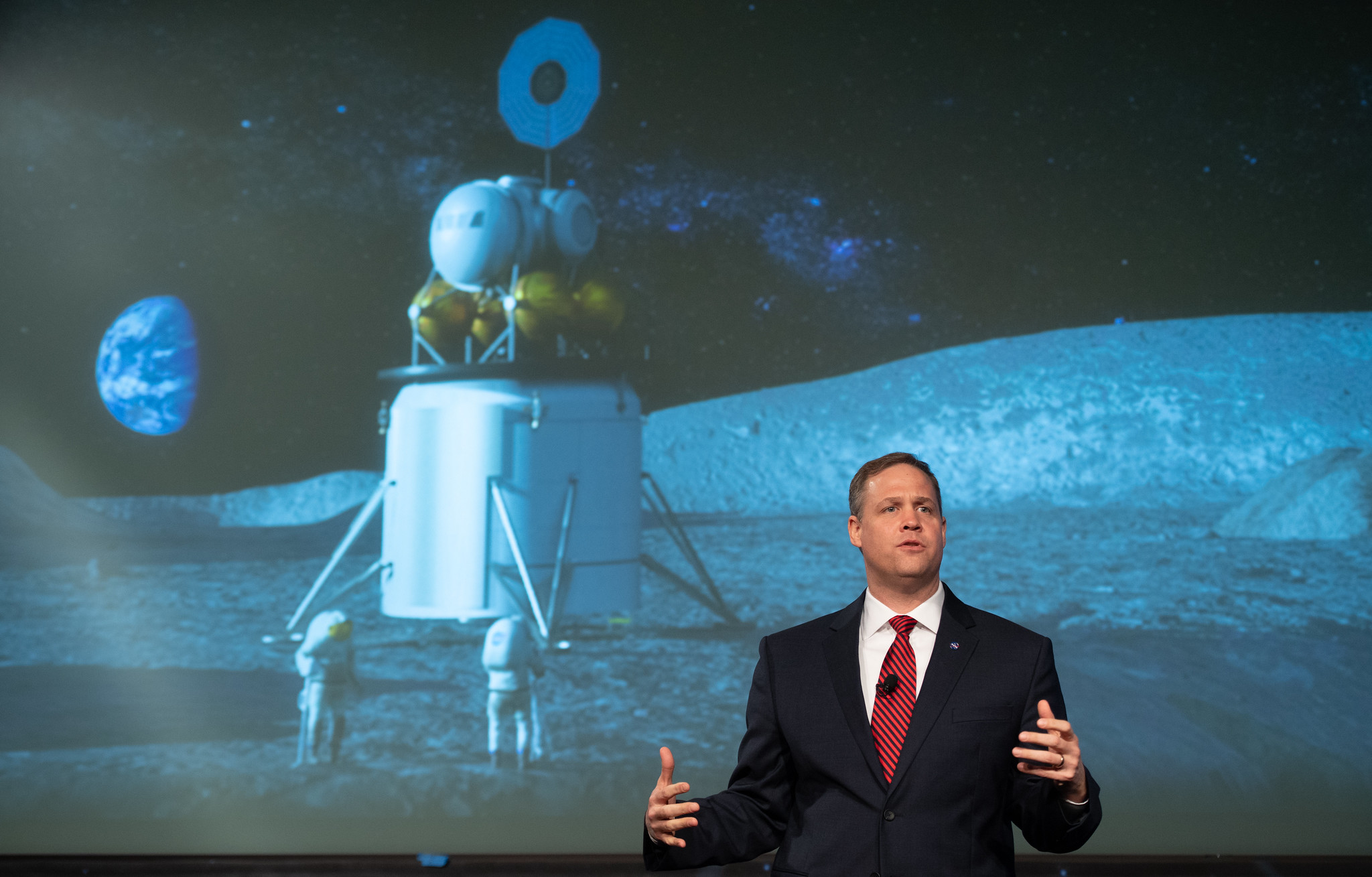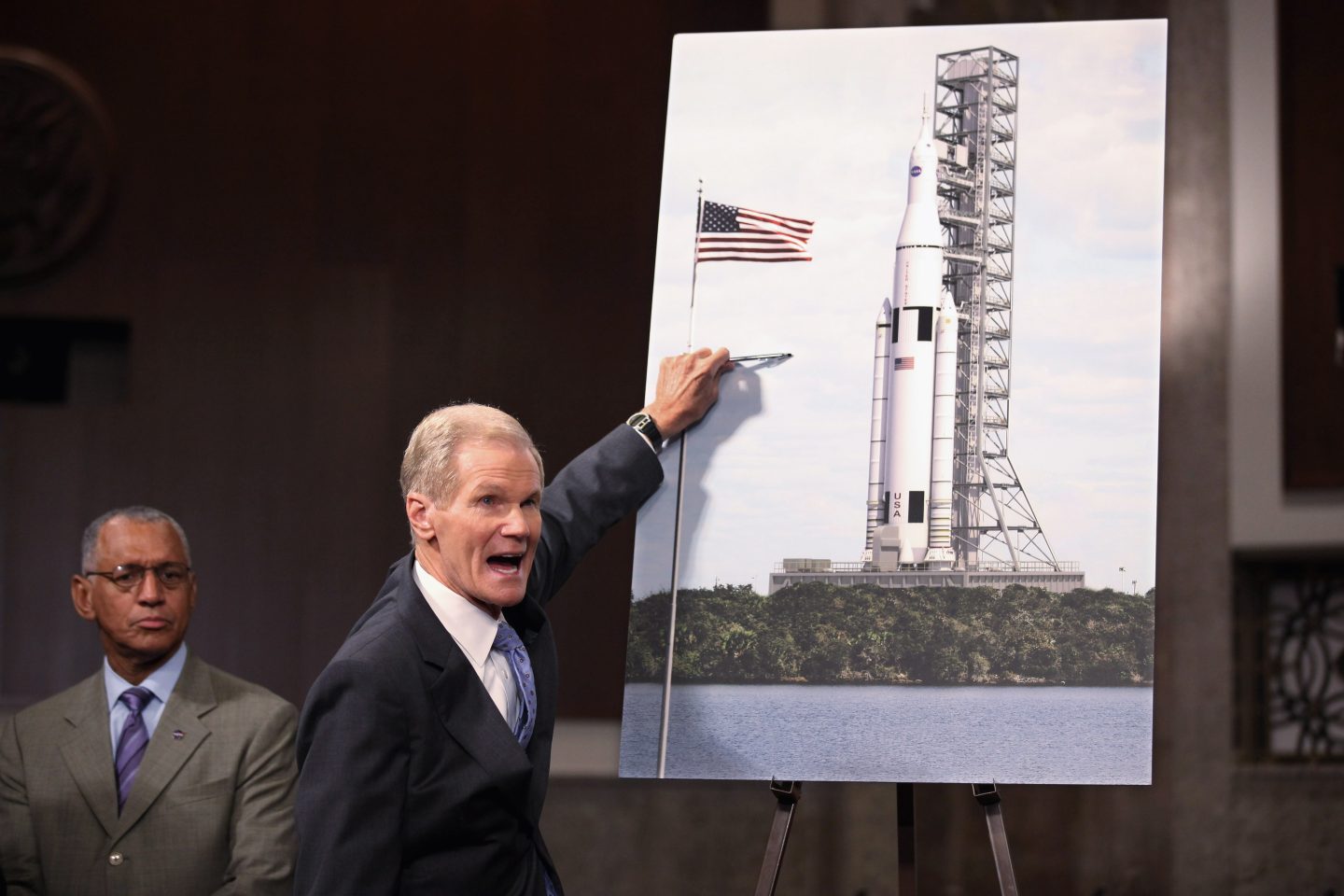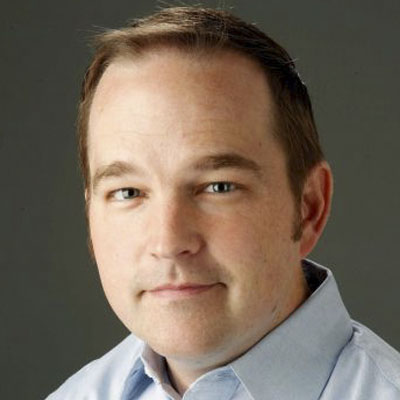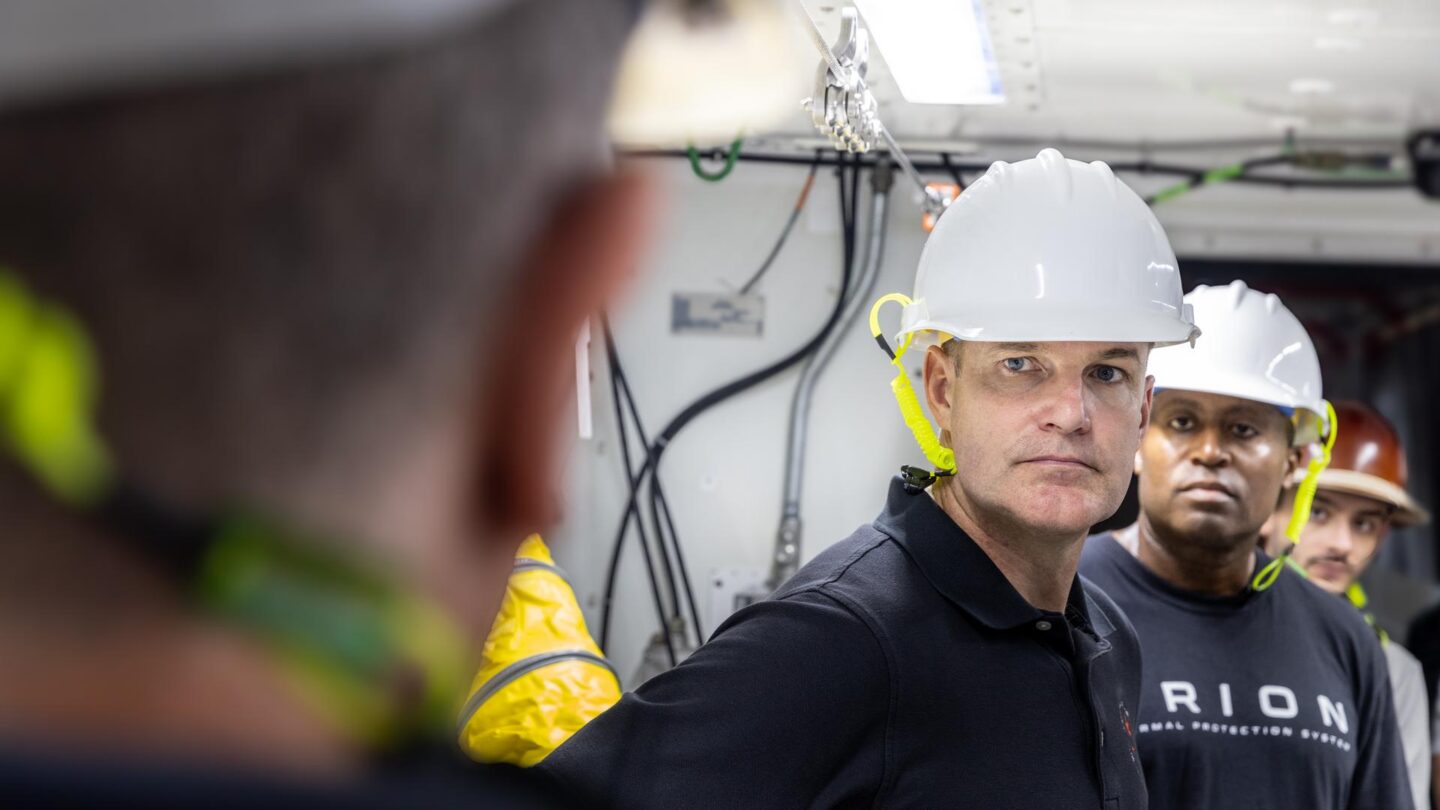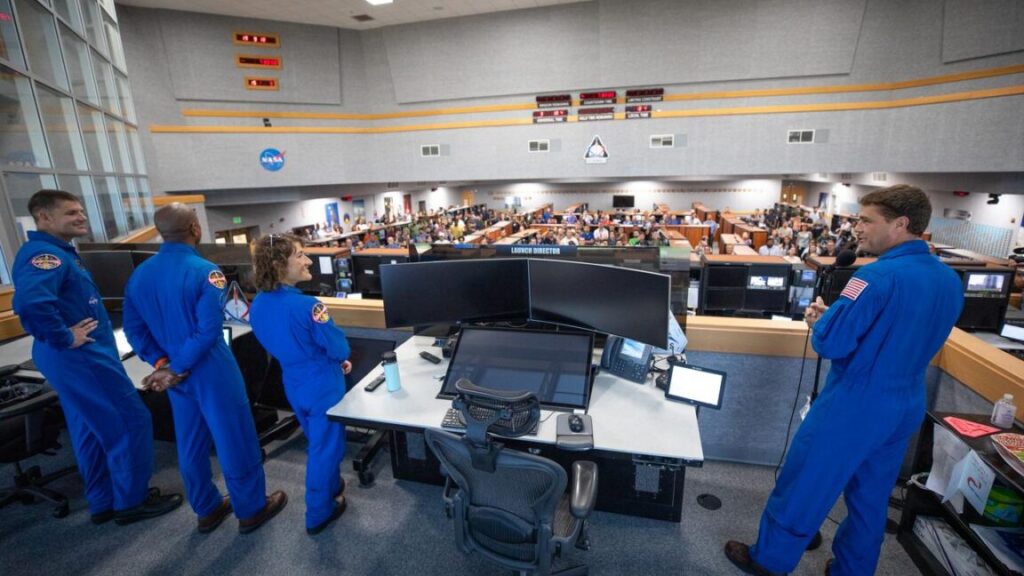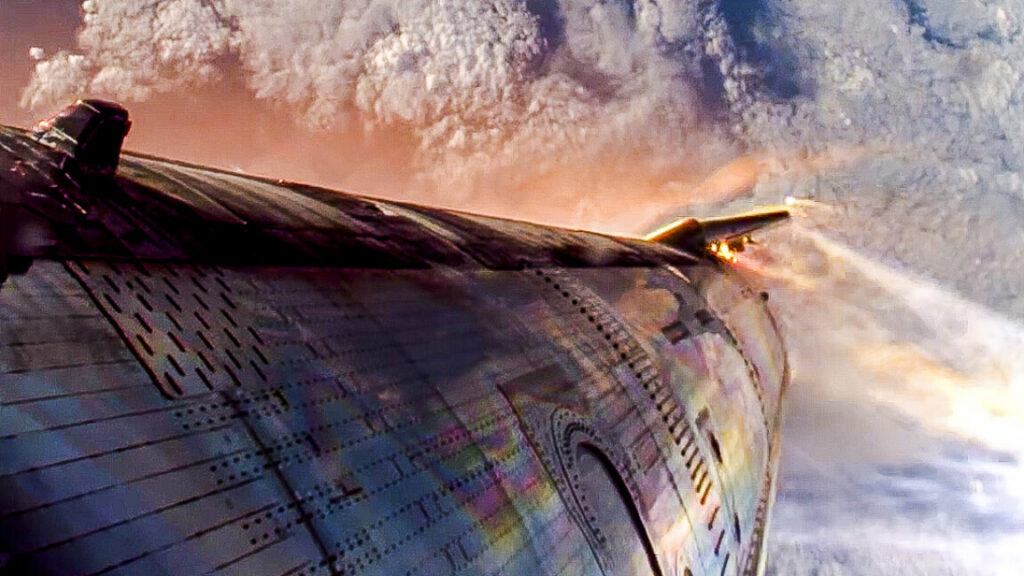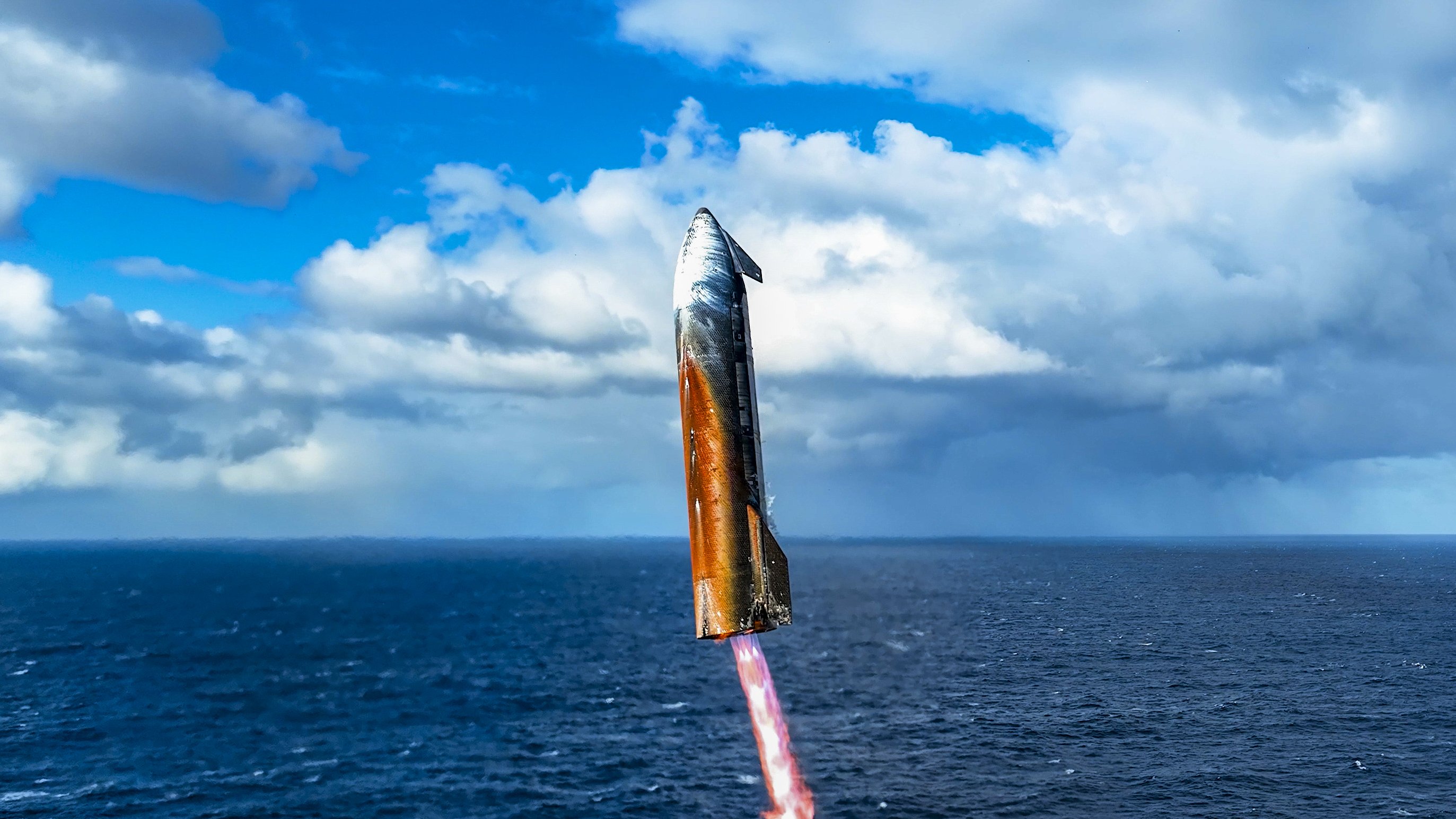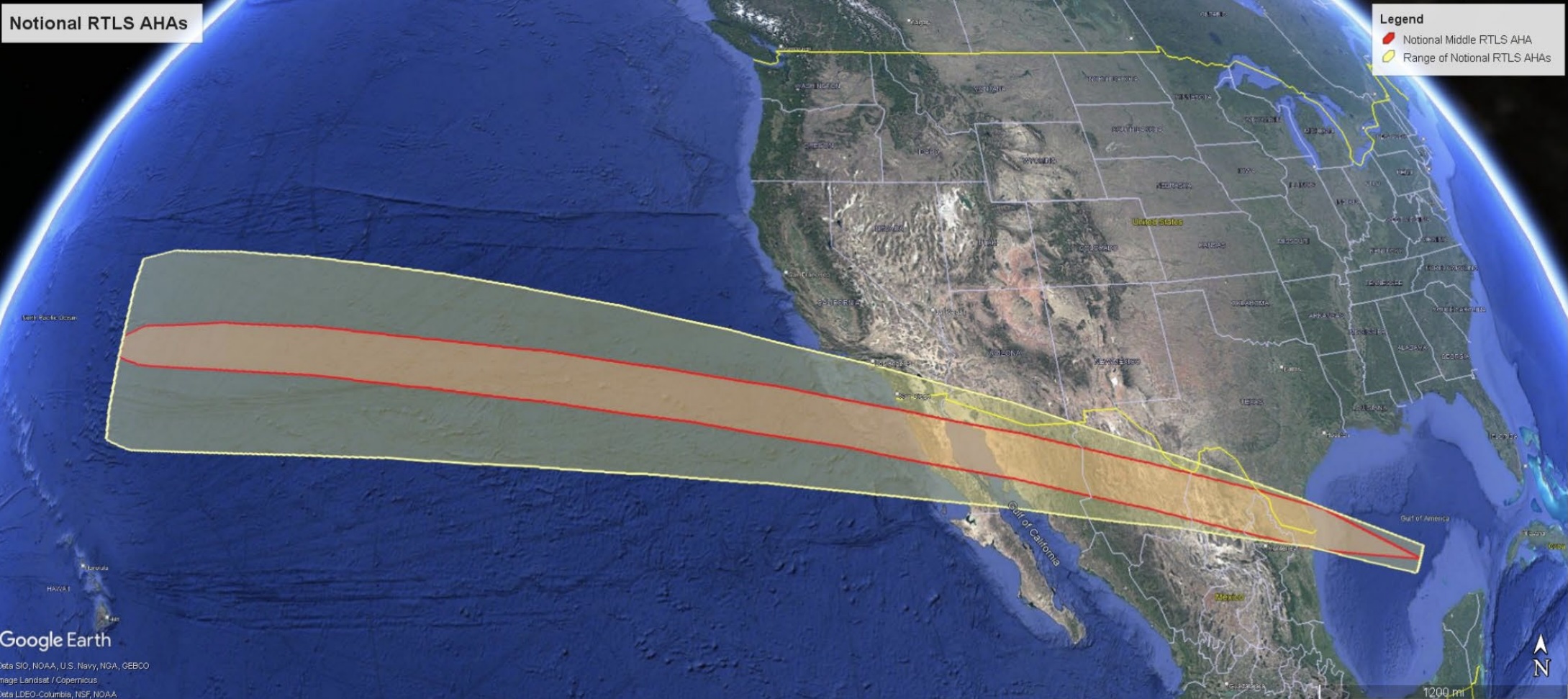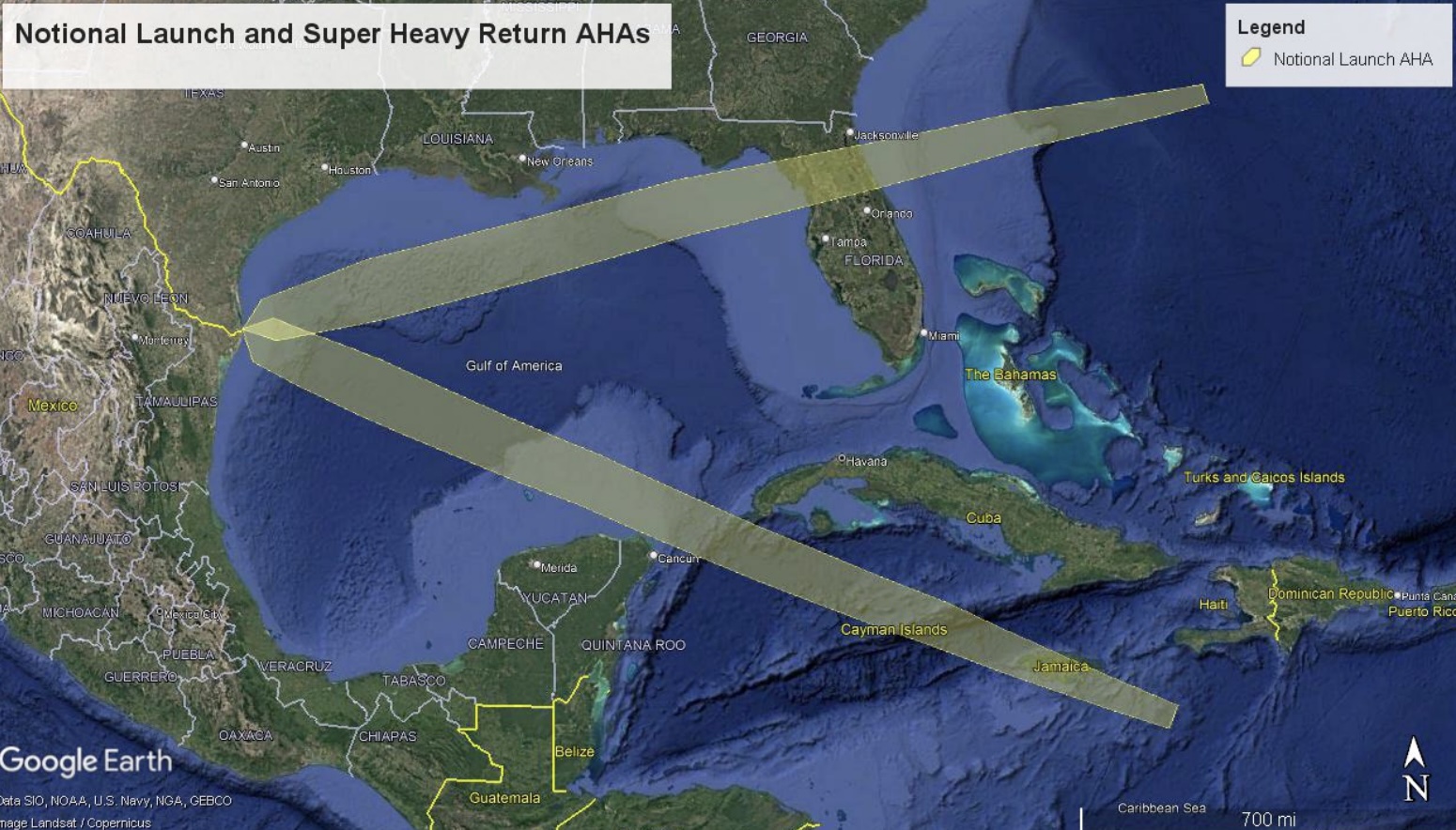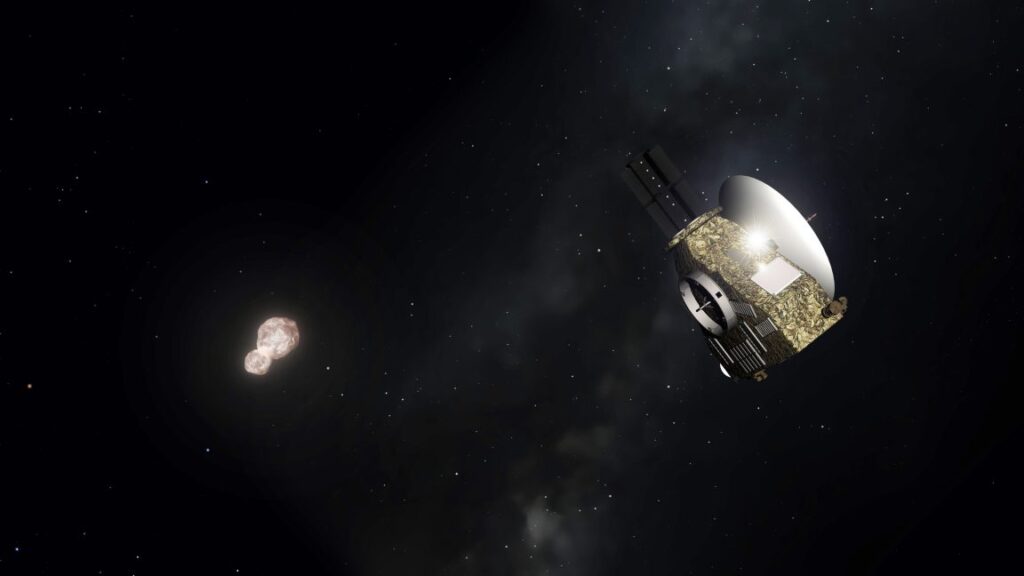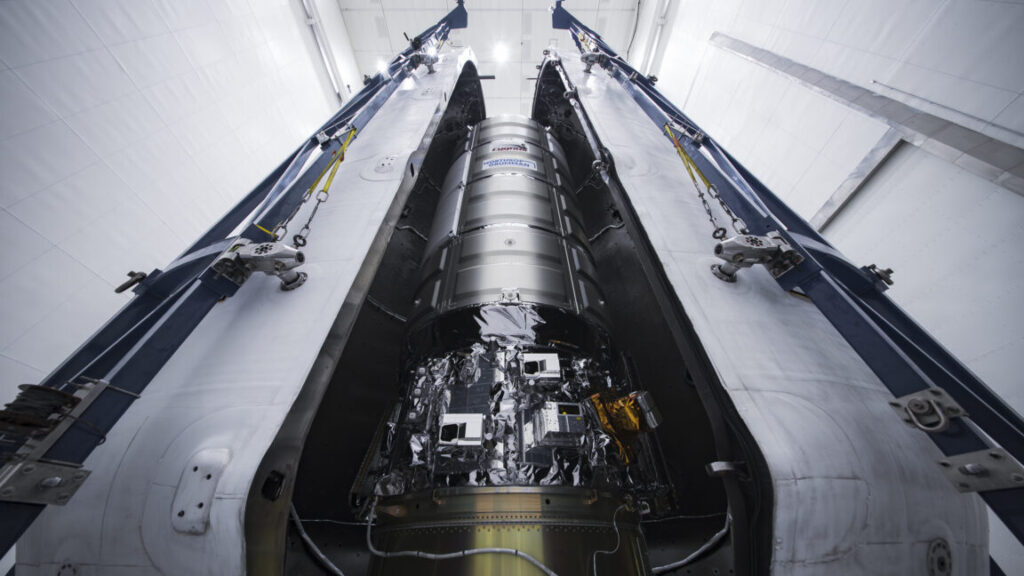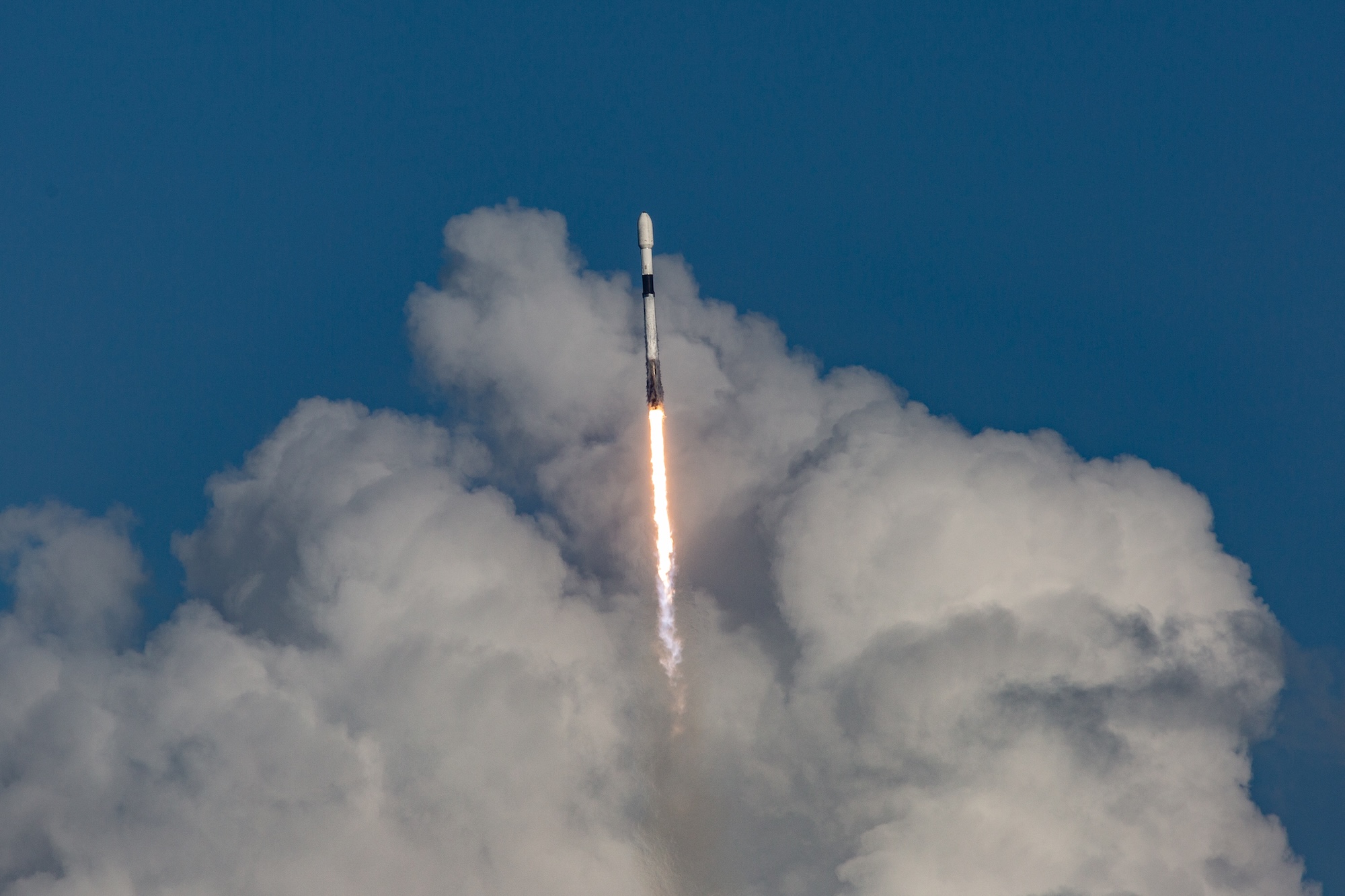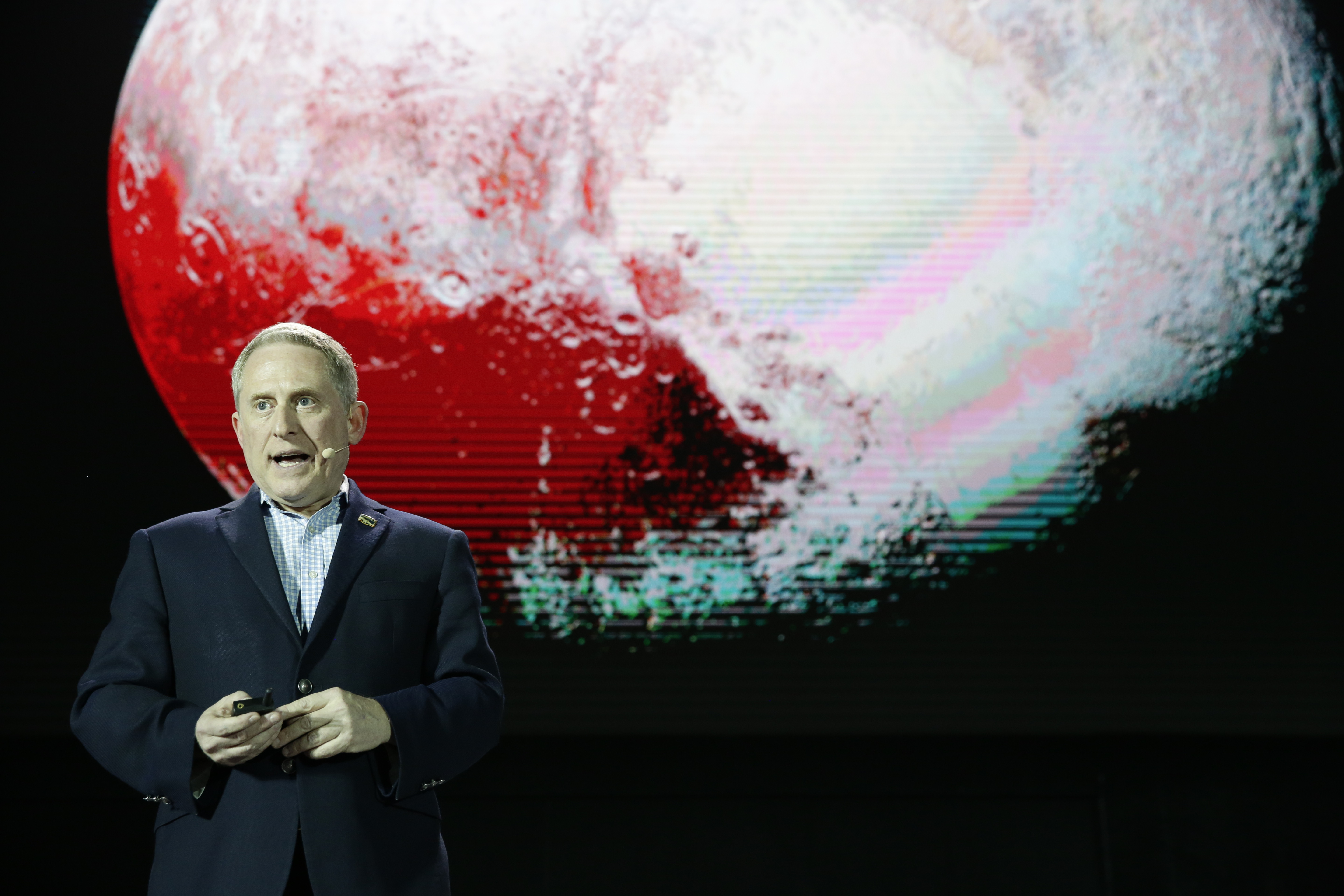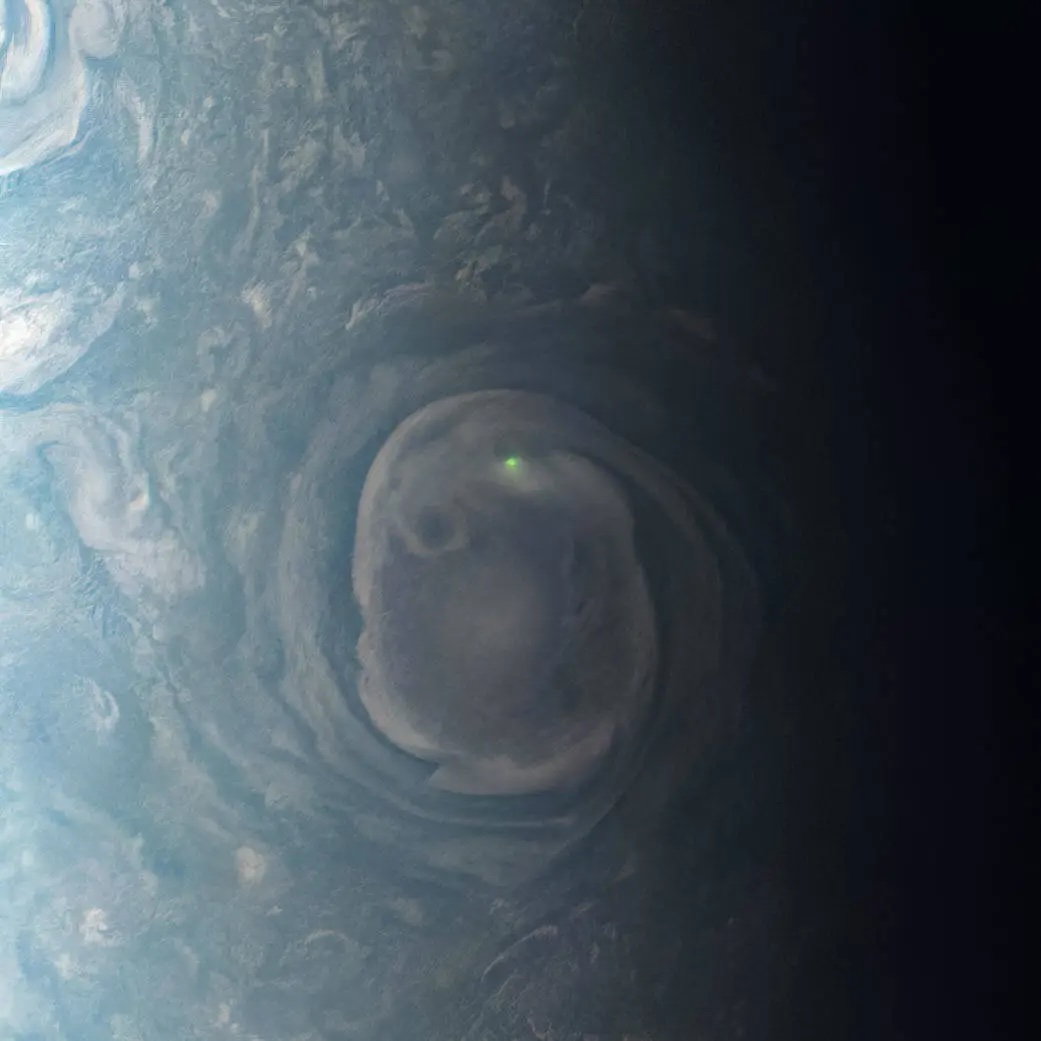One NASA science mission saved from Trump’s cuts, but others still in limbo
“Damage is being done already. Even if funding is reinstated, we have already lost people.”
Artist’s illustration of the OSIRIS-APEX spacecraft at asteroid Apophis. Credit: NASA/Goddard Space Flight Center
NASA has thrown a lifeline to scientists working on a mission to visit an asteroid that will make an unusually close flyby of the Earth in 2029, reversing the Trump administration’s previous plan to shut it down.
This mission, named OSIRIS-APEX, was one of 19 operating NASA science missions the White House proposed canceling in a budget blueprint released earlier this year.
“We were called for cancellation as part to the president’s budget request, and we were reinstated and given a plan to move ahead in FY26 (Fiscal Year 2026) just two weeks ago,” said Dani DellaGiustina, principal investigator for OSIRIS-APEX at the University of Arizona. “Our spacecraft appears happy and healthy.”
OSIRIS-APEX repurposes the spacecraft from NASA’s OSIRIS-REx asteroid sample return mission, which deposited its extraterrestrial treasure back on Earth in 2023. The spacecraft was in good shape and still had plenty of fuel, so NASA decided to send it to explore another asteroid, named Apophis, due to pass about 20,000 miles (32,000 kilometers) from the Earth on April 13, 2029.
The flyby of Apophis offers scientists a golden opportunity to see a potential killer asteroid up close. Apophis has a lumpy shape with an average diameter of about 1,100 feet (340 meters), large enough to cause regional devastation if it impacted the Earth. The asteroid has no chance of striking us in 2029 or any other time for the next century, but it routinely crosses the Earth’s path as it circles the Sun, so the long-term risk is non-zero.
It pays to be specific
Everything was going well with OSIRIS-APEX until May, when White House officials signaled their intention to terminate the mission. The Trump administration’s proposed cancellation of 19 of NASA’s operating missions was part of a nearly 50 percent cut to the agency’s science budget in the White House budget request for fiscal year 2026, which began October 1.
Lawmakers in the House and Senate have moved to reject nearly all of the science cuts, with the Senate bill maintaining funding for NASA’s science division at $7.3 billion, the same as fiscal year 2025, while the House bill reduces it to $6 billion, still significantly more than the $3.9 billion for science in the White House budget proposal.
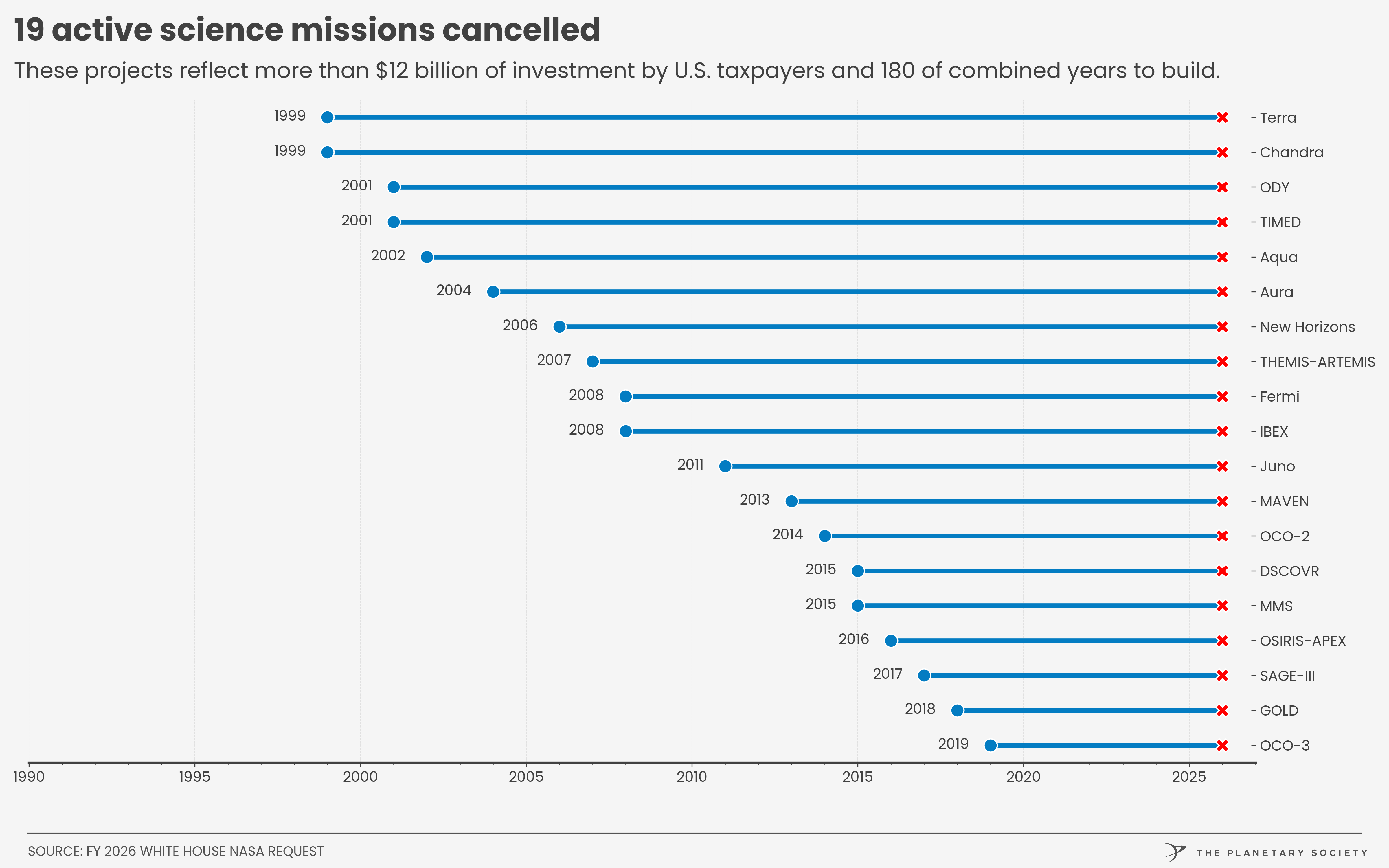
The Planetary Society released this chart showing the 19 operating missions tagged for termination under the White House’s budget proposal.
For a time this summer, Trump’s political appointees at NASA told managers to make plans for the next year assuming Trump’s cuts would be enacted. Finally, last month, those officials relented and instructed agency employees to abide by the House appropriations bill.
The House and Senate still have not agreed on any final budget numbers or sent an appropriations bill to the White House for President Trump’s signature. That’s why the federal government has been partially shut down for the last week. Despite the shutdown, ground teams are still operating NASA’s science missions because suspending them could result in irreparable damage.
Using the House’s proposed budget should salvage much of NASA’s portfolio, but it is still $1.3 billion short of the money the agency’s science program got last year. That means some things will inevitably get cut. Many of the other operating missions the Trump administration tagged for termination remain on the chopping block.
OSIRIS-APEX escaped this fate for a simple reason. Lawmakers earmarked $20 million for the mission in the House budget bill. Most other missions didn’t receive the same special treatment. It seems OSIRIS-APEX had a friend in Congress.

Budget-writers in the House of Representatives specified NASA should commit $20 million for the OSIRIS-APEX mission in fiscal year 2026. Credit: US House of Representatives
The only other operating mission the Trump administration wanted to cancel that got a similar earmark in the House budget bill was the Magnetospheric Multiscale Mission (MMS), a fleet of four probes in space since 2015 studying Earth’s magnetosphere. Lawmakers want to provide $20 million for MMS operations in 2026. Ars was unable to confirm the status of the MMS mission Wednesday.
The other 17 missions set to fall under Trump’s budget ax remain in a state of limbo. There are troubling signs the administration might go ahead and kill the missions. Earlier this year, NASA directed managers from all 19 of the missions at risk of cancellation to develop preliminary plans to wind down their missions.
A scientist on one of the projects told Ars that NASA recently asked for a more detailed “termination plan” to “passivate” their spacecraft by the end of this year. This goes a step beyond the closeout plans NASA requested in the summer. Passivation is a standard last rite for a spacecraft, when engineers command it to vent leftover fuel and drain its batteries, rendering it fully inert. This would make the mission unrecoverable if someone tried to contact it again.
This scientist said none of the missions up for termination will be out of the woods until there’s a budget that restores NASA funding close to last year’s levels and includes language protecting the missions from cancellation.
Damage already done
Although OSIRIS-APEX is again go for Apophis, DellaGiustina said a declining budget has forced some difficult choices. The mission’s science team is “basically on hiatus” until sometime in 2027, meaning they won’t be able to participate in any planning for at least the next year and a half.
This has an outsize effect on younger scientists who were brought on to the mission to train for what the spacecraft will find at Apophis, DellaGiustina said in a meeting Tuesday of the National Academies’ Committee on Astrobiology and Planetary Sciences.
“We are not anticipating we will have to cut any science at Apophis,” she said. But the cuts do affect things like recalibrating the science instruments on the spacecraft, which got dirty and dusty from the mission’s brief landing to capture samples from asteroid Bennu in 2020.
“We are definitely undermining our readiness,” DellaGiustina said. “Nonetheless, we’re happy to be reinstated, so it’s about as good as can be expected, I think, for this particular point in time.”
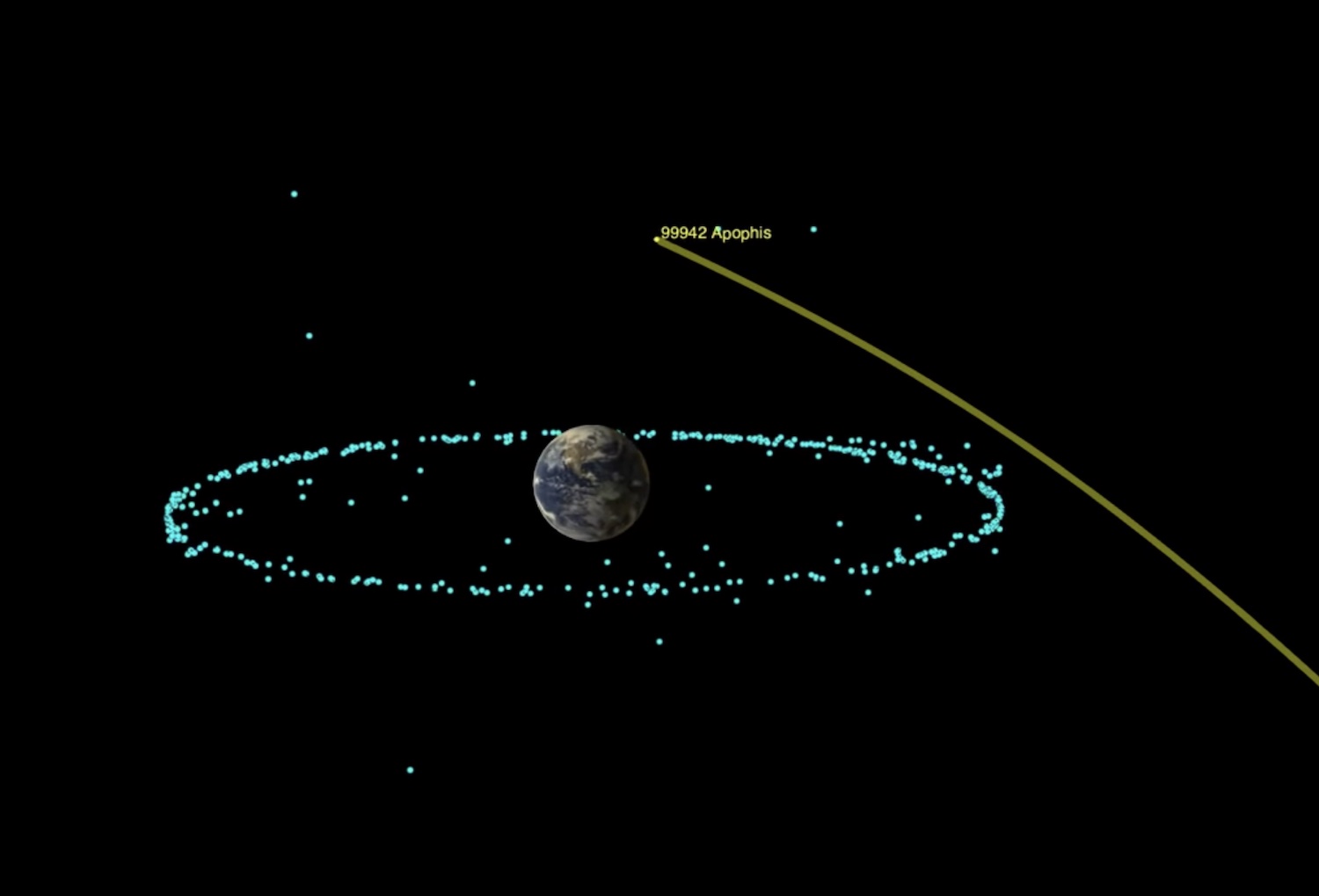
At its closest approach, asteroid Apophis will be closer to Earth than the ring of geostationary satellites over the equator. Credit: NASA/JPL
The other consequence of the budget reduction has been a drain in expertise with operating the spacecraft. OSIRIS-APEX (formerly OSIRIS-REx) was built by Lockheed Martin, which also commands and receives telemetry from the probe as it flies through the Solar System. The cuts have caused some engineers at Lockheed to move off of planetary science missions to other fields, such as military space programs.
The other active missions waiting for word from NASA include the Chandra X-ray Observatory, the New Horizons probe heading toward interstellar space, the MAVEN spacecraft studying the atmosphere of Mars, and several satellites monitoring Earth’s climate.
The future of those missions remains murky. A senior official on one of the projects said they’ve been given “no direction at all” other than “to continue operating until advised otherwise.”
Another mission the White House wanted to cancel was THEMIS, a pair of spacecraft orbiting the Moon to map the lunar magnetic field. The lead scientist for that mission, Vassilis Angelopoulos from the University of California, Los Angeles, said his team will get “partial funding” for fiscal year 2026.
“This is good, but in the meantime, it means that science personnel is being defunded,” Angelopoulos told Ars. “The effect is the US is not achieving the scientific return it can from its multi-billion dollar investments it has made in technology.”
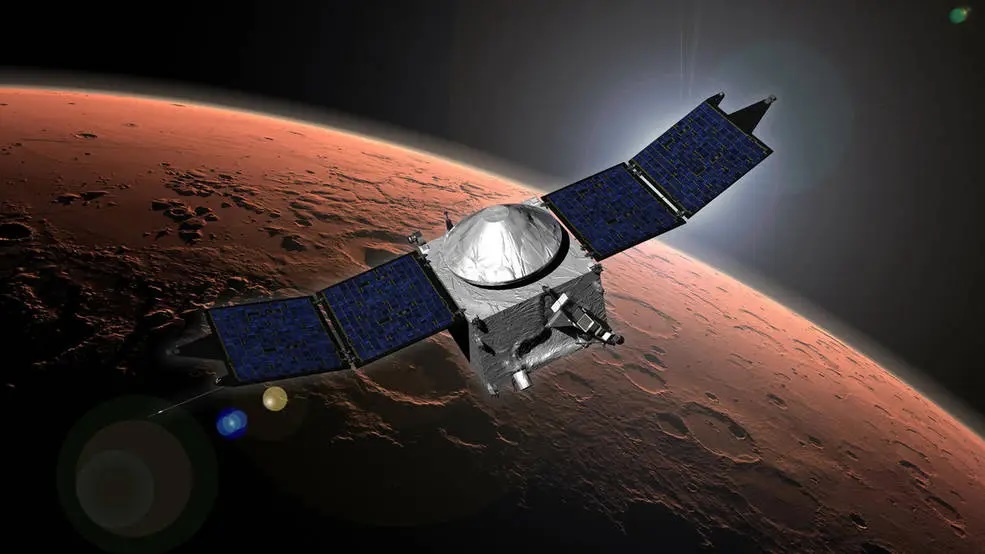
Artist’s concept of NASA’s MAVEN spacecraft, which has orbited Mars since 2014 studying the planet’s upper atmosphere.
To put a number on it, the missions already in space that the Trump administration wants to cancel represent a cumulative investment of $12 billion to design and build, according to the Planetary Society, a science advocacy group. An assessment by Ars concluded the operating missions slated for cancellation cost taxpayers less than $300 million per year, or between 1 and 2 percent of NASA’s annual budget.
Advocates for NASA’s science program met at the US Capitol this week to highlight the threat. Angelopoulos said the outcry from scientists and the public seems to be working.
“I take the implementation of the House budget as indication that the constituents’ pressure is having an effect,” he said. “Unfortunately, damage is being done already. Even if funding is reinstated, we have already lost people.”
Some scientists worry that the Trump administration may try to withhold funding for certain programs, even if Congress provides a budget for them. That would likely trigger a fight in the courts.
Bruce Jakosky, former principal investigator of the MAVEN Mars mission, raised this concern. He said it’s a “positive step” that NASA is now making plans under the assumption the agency will receive the budget outlined by the House. But there’s a catch.
“Even if the budget that comes out of Congress gets signed into law, the president has shown no reluctance to not spend money that has been legally obligated,” Jakosky wrote in an email to Ars. “That means that having a budget isn’t the end; and having the money get distributed to the MAVEN science and ops team isn’t the end—only when the money is actually spent can we be assured that it won’t be clawed back.
“That means that the uncertainty lives with us throughout the entire fiscal year,” he said. “That uncertainty is sure to drive morale problems.”
One NASA science mission saved from Trump’s cuts, but others still in limbo Read More »
